- News
- Reviews
- Bikes
- Accessories
- Accessories - misc
- Computer mounts
- Bags
- Bar ends
- Bike bags & cases
- Bottle cages
- Bottles
- Cameras
- Car racks
- Child seats
- Computers
- Glasses
- GPS units
- Helmets
- Lights - front
- Lights - rear
- Lights - sets
- Locks
- Mirrors
- Mudguards
- Racks
- Pumps & CO2 inflators
- Puncture kits
- Reflectives
- Smart watches
- Stands and racks
- Trailers
- Clothing
- Components
- Bar tape & grips
- Bottom brackets
- Brake & gear cables
- Brake & STI levers
- Brake pads & spares
- Brakes
- Cassettes & freewheels
- Chains
- Chainsets & chainrings
- Derailleurs - front
- Derailleurs - rear
- Forks
- Gear levers & shifters
- Groupsets
- Handlebars & extensions
- Headsets
- Hubs
- Inner tubes
- Pedals
- Quick releases & skewers
- Saddles
- Seatposts
- Stems
- Wheels
- Tyres
- Health, fitness and nutrition
- Tools and workshop
- Miscellaneous
- Cross country mountain bikes
- Tubeless valves
- Buyers Guides
- Features
- Forum
- Recommends
- Podcast
review
£899.99
VERDICT:
A fantastic urban bike with an interesting wheel and tyre setup that will leave you smiling
Weight:
11,350g
Contact:
At road.cc every product is thoroughly tested for as long as it takes to get a proper insight into how well it works. Our reviewers are experienced cyclists that we trust to be objective. While we strive to ensure that opinions expressed are backed up by facts, reviews are by their nature an informed opinion, not a definitive verdict. We don't intentionally try to break anything (except locks) but we do try to look for weak points in any design. The overall score is not just an average of the other scores: it reflects both a product's function and value – with value determined by how a product compares with items of similar spec, quality, and price.
What the road.cc scores meanGood scores are more common than bad, because fortunately good products are more common than bad.
- Exceptional
- Excellent
- Very Good
- Good
- Quite good
- Average
- Not so good
- Poor
- Bad
- Appalling
Just when you thought bikes couldn't get more niche, the Saracen Levarg FB is a flat-bar conversion of a drop-bar gravel bike with 650B wheels and a 1x groupset, designed for urban adventures. Despite that rather convoluted genesis, it fulfils its brief exceedingly well.
- Pros: Great fun for short blasts, reliable groupset, 650B wheels work a treat
- Cons: Huge tyres can feel a little overwhelming, Tektro disc brakes are average, not a bike for long rides, no rack mounts on the seatstays
For a bike that looks like an overinflated hybrid, but which is really a flat-bar version of a drop-bar gravel bike, the Levarg FB is something of a revelation. With impressively accurate control, the first sensation you notice when riding it – even on flat, smooth tarmac – is that this is really quite fun.
> Find your nearest dealer here
The combination of rigid carbon fork with very large volume rubber is an interesting mix that works better than expected, especially for general 'about town' riding. There's no escaping the fact that road imperfections do make their way to you up through the front of the bike, albeit significantly cushioned by the vast 47mm WTB ByWay tyre. But the flipside is that the front tyre's grip, allied with the direct nature of the carbon fork, tapered head tube and stiff, smaller diameter wheels, means the bike goes exactly where you want it.
At the back, comfort is much more in evidence and the ByWay tyre plays its part with the more forgiving aluminium frame to keep your rear end peachy. (For the record, the Saracen website says the Levarg FB comes with a 47mm WTB DNA tyre at the back, but our test bike was fitted with ByWays front and rear.) With such a setup, you'd think power delivery would be left wanting but that's decently efficient too. There's no great sense of wasted energy, although the rolling thunder generated by the huge tyres is a sign that this isn't a bike entirely dedicated to uncompromised forward motion.
The Levarg still moves far more swiftly than you might imagine, though. In terms of seated climbing, it's easy to get in a rhythm and pound out the height gain. In terms of out-the-saddle efforts and sprinting, while this isn't the kind of bike that's going to win any race from the lights, it's not averse to being manhandled a little. Indeed, as you'd expect with such expansive contact patches, stability and road holding is very, very secure, meaning you can throw the Levarg around to your heart's content.
Frame and position
Those talents aren't just thanks to the rubber. The frame itself is the same as that found on Saracen's Levarg range of drop-bar adventure bikes, and it does a very effective job at being a fast and fun commuter.
It's also nicely finished, with its 6061 aluminium tubes accommodating internal routing for rear mech and rear brake, and in-fork routing for the front disc.
Saracen lists 'Mudguard Eyelets and Rack Mounts' in the spec, but there's just one spare eyelet either side on the dropouts which the rack and mudguard would have to share, and no mounts on the seatstays. That might seem a bit of an omission, but it’s not really the kind of bike you'd want to laden down with massive panniers – it's more a 'small rucksack and be damned’ job.
Tubes are a mixture of shapes, mostly rounded, although the top tube gets a bit angular where it meets the head tube. There's also an interesting kink where the large down tube meets the head tube.
Stays are svelte and the Levarg can accept 700C wheels with up to 44mm tyres, although it comes with a set of 650B hoops fitted with 47mm tyres as standard.
Certainly the fundamentals of both the frame and the fork work very well to deliver excellent control and decent comfort. The tapered head tube no doubt contributes to this, but position is good too. Thanks to its drop-bar origins, you feel a little more head down in the saddle than with a typical hybrid but that adds to the general sense of eagerness.
I have to say, the all-up weight of just over 11kg is quite a nice surprise as, on first glance, this appears quite a big bike.
Components
1x systems are so good these days – or rather, cassettes are so wide-ranging – that you really don't feel like you're missing out on much performance by having a single chainring. In this case it's a 44-tooth ring, and while the Levarg may 'only' use a 10-speed system, with a choice spanning 11-42 teeth at the back, you should be able to spin in all but the most testing of times.
The Shimano Deore rear mech may not be the last word in refinement but gear changes are positive and reliable, and the thumb and finger-actuated shifter is rewarding to use.
On paper, it may seem a shame that Saracen has specced its own custom chainset (made by Prowheel) rather than a matching series option from Shimano. But actually, it's a smart enough bit of kit and there's no hint of performance being undermined.
It's not entirely good news, though. The bane of my life – Tektro Auriga hydraulic disc brakes – have been fitted. There's nothing inherently wrong about them; they're OK at scrubbing and regulating speed, but all-out stopping power lags significantly behind Shimano discs, so you have to keep your eye on speed, especially when descending.
Wheels, tyres and finishing kit
If you've jumped on the Levarg FB from a typical road bike, looking at that huge 47mm WTB ByWay tyre from the saddle, you'd be forgiven for thinking there has to be a motor – electric or otherwise – attached somewhere. However, in its defence, the ByWay has a clever design with a smooth-rolling central section for the road and extra tread found on the shoulders. Despite the ByWay's looks, and as with the rest of the Levarg FB, it's suitable up to gravel surface and byways, but nothing too gnarly.
While the big rubber may be obvious, perhaps the Levarg's most effective secret weapon is the 650B wheelset, comprising Araya rims on thru-axle Formula hubs. They're plenty stiff enough and make an important contribution to the Levarg's generally eager-feeling character; 650B wheels might not be the answer for every road bike, but in this guise on a fun urban runaround they work a treat.
Kit elsewhere is fairly standard mainstream stuff, with own-brand alloy bar, stem and seatpost. However, the Saracen lock-on grips provide comfortable contact points and the Saracen Custom Road saddle is one of the best I've found fitted to a bike at this price. It's very comfy.
Value
Although the 'FB' in the Levarg FB's name marks this out as the one flat-bar model in the range, this isn't simply a bar swap but a completely independent model. For example, the entry-level Levarg drop-bar model (£1,099.99) comes with a Shimano Sora road groupset with double chainrings rather than the FB's 1x Deore setup, and TRP Spyre C cable disc brakes rather than the FB's Tektro Auriga hydraulic discs. If you're happy to forgo the drops, this FB version look a better deal.
> Buyer's Guide: 7 of the best urban commuter bikes
However, compared to other brands making similar models, the Levarg FB looks a little expensive. Of bikes we've tested, the Bergamont Sweep 4 is another drop-bar-influenced urban bike with big tyres but comes with a Shimano Claris double gearset and Shimano hydraulic brakes for £599.99. Meanwhile, the Boardman URB 8.8 is another exciting city speedster with a classy frame and SRAM NX1 single chainring system (but those Tektro discs again) for £699.99.
Conclusion
Saracen says the FB is the Levarg range's commuting option, and that seems a very fair summary. One of the great joys of the Levarg's ride experience is being able to fling the bike around a bit – think old school Mini before it went all posh and German. So weaving through traffic, with the insurance of that wide rubber, comes as a real delight.
But while I love this bike, I must also play devil's advocate, because there are some limitations. Despite its obvious talents and vast range of influences, strangely the Levarg FB has quite a limited appeal beyond commuting. With that rigid fork, it's certainly no mountain bike. With those huge tyres and wide, flat bar, it's not a long-distance mile-muncher. And there are better general use leisure hybrids out there (not least Saracen's own Urban Cross 3).
Those caveats aside, if you're a city dweller looking for some urban thrills, or a commuter wanting a bike that will bring you to work with a smile, look no further.
Verdict
A fantastic urban bike with an interesting wheel and tyre setup that will leave you smiling
road.cc test report
Make and model: Saracen Levarg FB
Size tested: Large
About the bike
List the components used to build up the bike.
Frame: 6061 custom butted aluminium with tapered head tube
Fork: Aluminium steerer with carbon blades
Rear derailleur: Shimano Deore Shadow (10 speed)
Chainset: Prowheel Saracen custom 44t
Cassette: Shimano Deore 11-42t
Shifter: Shimano Deore
Brakes: Tektro RD-290 Auriga hydraulic discs
Brake levers: Tektro RD-290 Auriga
Rims: Araya DW-650 doublewall alloy 32 hole
Hubs: Formula 12mm thru axle
Tyres: WTB ByWay 47mm
Stem: Saracen alloy 80mm
Bar: Saracen 6061 alloy 720mm
Seatpost: Saracen 3D forged alloy
Saddle: Saddle Custom Road
Grip: Saracen lock-on
Tell us what the bike is for and who it's aimed at. What do the manufacturers say about it? How does that compare to your own feelings about the bike?
Flat-bar bike aimed at commuters.
Saracen says: "We took our MTB DNA and moulded into a gravel bike... Using longer top tubes and shorter stems allows for a roomier cockpit, more centralised rider position on the bike and more direct steering input. 650b wheels come as standard but the frame can accommodate 700c wheels as well if you wish to change, with a recommended maximum tyre size of 50mm in 650b and 44mm in 700c respectfully. The Levarg FB (Flat Bar) is our commuter focused model and comes with Shimano 1x10 speed drivetrain and Tektro hydraulic disc brakes. WTB's most dirt-focused tyre in the form of the ByWay (47C) allows riders to find comfort on remote gravel roads without feeling draggy on the paved roads!"
Where does this model sit in the range? Tell us briefly about the cheaper options and the more expensive options
This model is unique in that it's the only flat-bar model in the Levarg range. It sits below the entry-level drop-bar equivalent.
Frame and fork
Overall rating for frame and fork
9/10
Tell us about the build quality and finish of the frame and fork?
Very nicely made frame and fork combo with internal routing and excellent finish.
Tell us about the materials used in the frame and fork?
The frame is made from custom-butted 6061 aluminium and the fork has a tapered aluminium steerer with carbon blades.
Tell us about the geometry of the frame and fork?
For a hybrid-style bike, it's quite a stretched out, aggressive geometry. That's all relative, though – it's not extreme enough to put anyone off!
How was the bike in terms of height and reach? How did it compare to other bikes of the same stated size?
Very good in both areas – it fitted as I expected.
Riding the bike
Was the bike comfortable to ride? Tell us how you felt about the ride quality.
Yes. Although the front is noticeably stiffer than the rear.
Did the bike feel stiff in the right places? Did any part of the bike feel too stiff or too flexible?
It was certainly not too flexible. I'd say it was stiff enough without being hard work.
How did the bike transfer power? Did it feel efficient?
Very well. There's obviously going to be some compromise but I was surprised at how eager the bike felt.
Was there any toe-clip overlap with the front wheel? If so was it a problem?
Nope.
How would you describe the steering? Was it lively neutral or unresponsive? Pretty lively. Again, not tiringly so, unless you're riding it for a full day.
Tell us some more about the handling. How did the bike feel overall? Did it do particular things well or badly?
I enjoyed the Levarg FB's handling. Control was direct and surefooted. You wouldn't necessarily think so from looking at it, but it's quite an exciting bike to ride.
Which components had the most effect (good or bad) on the bike's comfort? would you recommend any changes?
Tyres, rear wheel, frame and saddle – they all work well to make the rear very comfortable. The rigid carbon fork means the front isn't quite so insulating.
Which components had the most effect (good or bad) on the bike's stiffness? would you recommend any changes?
The 650B wheels really made the bike feel alive.
Which components had the most effect (good or bad) on the bike's efficiency? would you recommend any changes?
The big ol' tyres. I'd be intrigued to swap them for something skinnier to see what the result would be for ride experience.
Rate the bike for efficiency of power transfer:
7/10
It was good – better than I expected considering the overall setup.
Rate the bike for acceleration:
7/10
Decent acceleration.
Rate the bike for sprinting:
5/10
The Levarg FB likes to be thrown about, but it's not a sprint machine.
Rate the bike for high speed stability:
7/10
Certainly not twitchy but you have to stay aware.
Rate the bike for cruising speed stability:
8/10
Very good.
Rate the bike for low speed stability:
8/10
Good despite the quick handling.
Rate the bike for flat cornering:
9/10
Very good – I enjoyed cornering with the Levarg FB.
Rate the bike for cornering on descents:
7/10
You have to be slightly cautious because the bike might be more eager than your handling abilities or the brakes' performance!
Rate the bike for climbing:
7/10
Very efficient for sit-down climbing. No great advantage in getting out of the saddle.
The drivetrain
Rate the drivetrain for performance:
7/10
Not flashy but everything works well.
Rate the drivetrain for durability:
8/10
Shimano 1x systems should run and run.
Rate the drivetrain for weight:
8/10
No front mech or second chainring means weight saved!
Tell us some more about the drivetrain. Anything you particularly did or didn't like? Any components which didn't work well together?
Deore shifters work a treat and the Prowheel/Saracen chainset does its job well.
Wheels and tyres
Rate the wheels for performance:
9/10
Excellent wheelset – really added to the Levarg FB's dynamism.
Rate the wheels for durability:
8/10
Looks solid.
Rate the wheels for weight:
8/10
Rate the wheels for comfort:
8/10
The wheelset contributes to overall comfort.
Tell us some more about the wheels.Did they work well in the conditions you encountered? Would you change the wheels? If so what for?
I wouldn't change the wheels any time soon – they're a big part of the Levarg FB's charm – but a swap to 700C wheels would be interesting.
Rate the tyres for performance:
9/10
I really enjoyed using these tyres. They're surprisingly good fun on the road.
Rate the tyres for durability:
8/10
Rate the tyres for weight:
7/10
Not bad considering their size.
Rate the tyres for comfort:
9/10
They really help to take the sting out of the front end, and contribute to excellent comfort at the back.
Tell us some more about the tyres. Did they work well in the conditions you encountered? Would you change the tyres? If so what for?
Excellent tyres for road and relatively simple mixed terrain, but you'll need more grip for tougher terrain or skinnier tyres if you want to do lots of open road miles.
Controls
Rate the controls for performance:
7/10
All did its job with no issues.
Rate the controls for durability:
7/10
Rate the controls for weight:
7/10
Standard stuff.
Rate the controls for comfort:
9/10
I really liked the saddle and lock-on grips.
Tell us some more about the controls. Any particularly good or bad components? How would the controls work for larger or smaller riders?
Bar width is good, stem length is sensible and the saddle is another nice surprise – no need to upgrade any time soon.
Anything else you want to say about the componentry? Comment on any other components (good or bad)
Tektro Auriga disc brakes are very average and lack outright stopping power, which is a shame because there's plenty of rubber to handle the grip required.
Your summary
Did you enjoy riding the bike? Yes
Would you consider buying the bike? Yes
Would you recommend the bike to a friend? Yes
How does the price compare to that of similar bikes in the market, including ones recently tested on road.cc?
The Levarg FB looks a little expensive. Of similar bikes we've tested, the Bergamont Sweep 4 is another drop-bar influenced urban bike with big tyres but comes with a Shimano Claris double gearset and Shimano hydraulic brakes for £599.99. The Boardman URB 8.8 is another exciting city speedster with a classy frame and SRAM NX1 single chainring system (but those Tektro discs again) for £699.99.
Rate the bike overall for performance:
9/10
Rate the bike overall for value:
5/10
Use this box to explain your overall score
Although the Levarg FB is a little expensive and its talents are relevant almost exclusively to urban riding and light commuting, it does these jobs so well that it still deserves a high score. It's one of the most fun urban bikes on the market.
About the tester
Age: 39
I usually ride: Islabikes Beinn 29 My best bike is: 25-year-old Dawes Galaxy
I've been riding for: Over 20 years I ride: Most days I would class myself as: Experienced
I regularly do the following types of riding: commuting, touring, sportives, general fitness riding, mountain biking, leisure
Latest Comments
- the infamous grouse 9 sec ago
the terreno zero do feel a bit sluggish if the pressure isnt spot-on .. otoh the grip level and puncture resistance are pretty good. and the hex...
- Rendel Harris 6 min 26 sec ago
Good point, it's England and Wales. Northern Ireland seem to have the same minimum and maximum penalties but I don't know if they work with the...
- David9694 21 min 46 sec ago
Our car-dominated urban environment is repressive and hot - let's see if we can desecrate the countryside ...
- chrisonabike 50 min 13 sec ago
Are you confusing a clearly opinionated - nay, biased rag like road.cc with a balanced, respectable news organisation like the BBC?
- Hirsute 1 hour 53 min ago
Car spreading https://climatevisuals.org/carspreading/ https://cleancitiescampaign.org/carspreading
- Bigtwin 2 hours 6 min ago
"Welcome to your local Council - you don't have to be a moron to work here, but it really helps if you want to blend in".
- Rendel Harris 2 hours 22 min ago
Laverack still offer the same machine in a rim brake version so the "disc" is there to differentiate it from its stablemate.
- mdavidford 3 hours 52 sec ago
Quite right - get those soapboxes off our roads. As everyone knows, the right place for them is the internet.
- Bungle_52 3 hours 4 min ago
It's finally live. Here is the link :...











































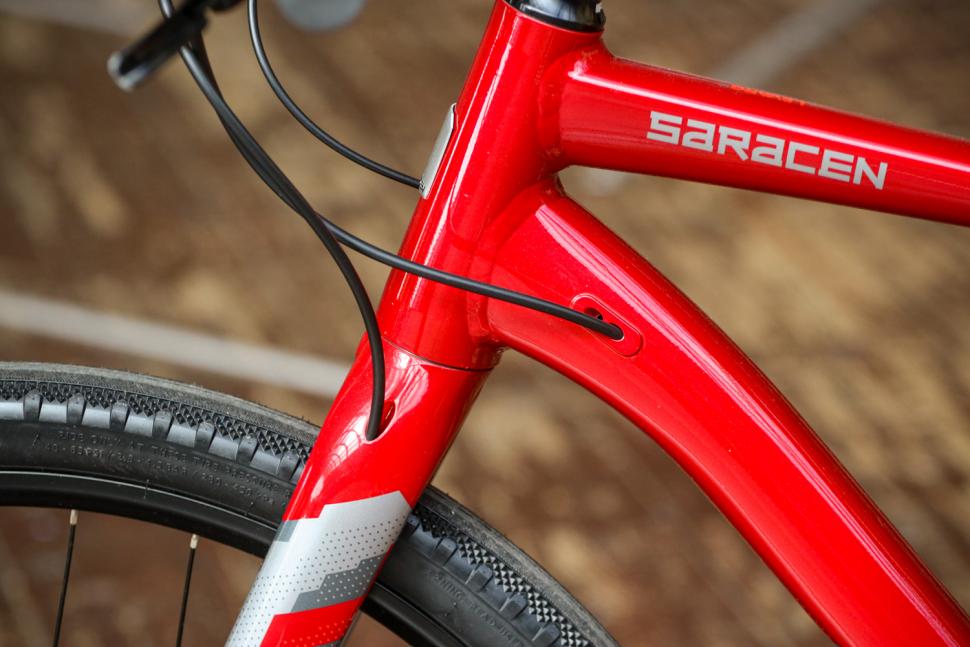
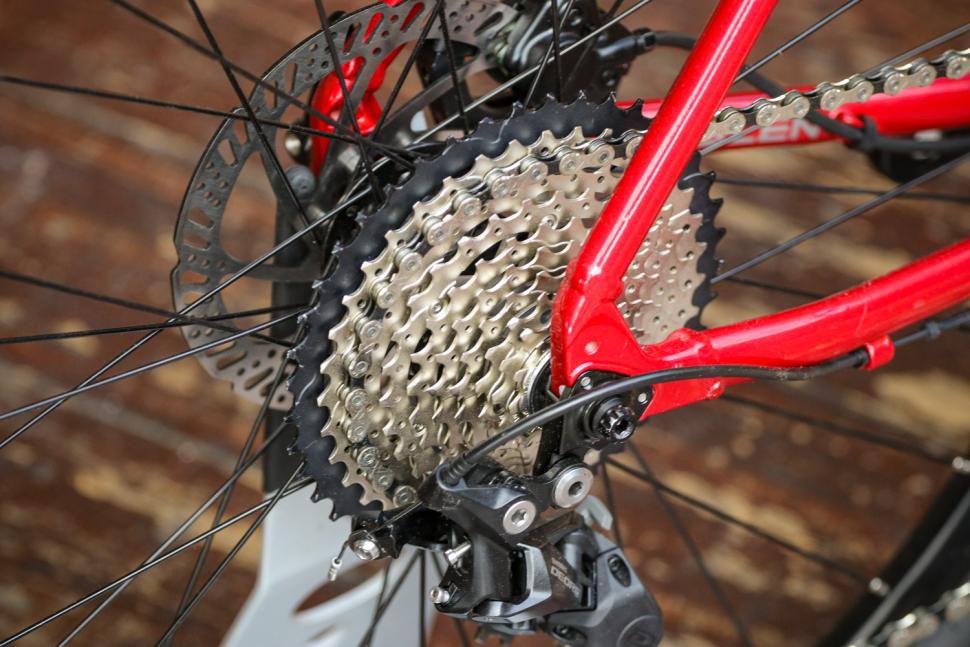






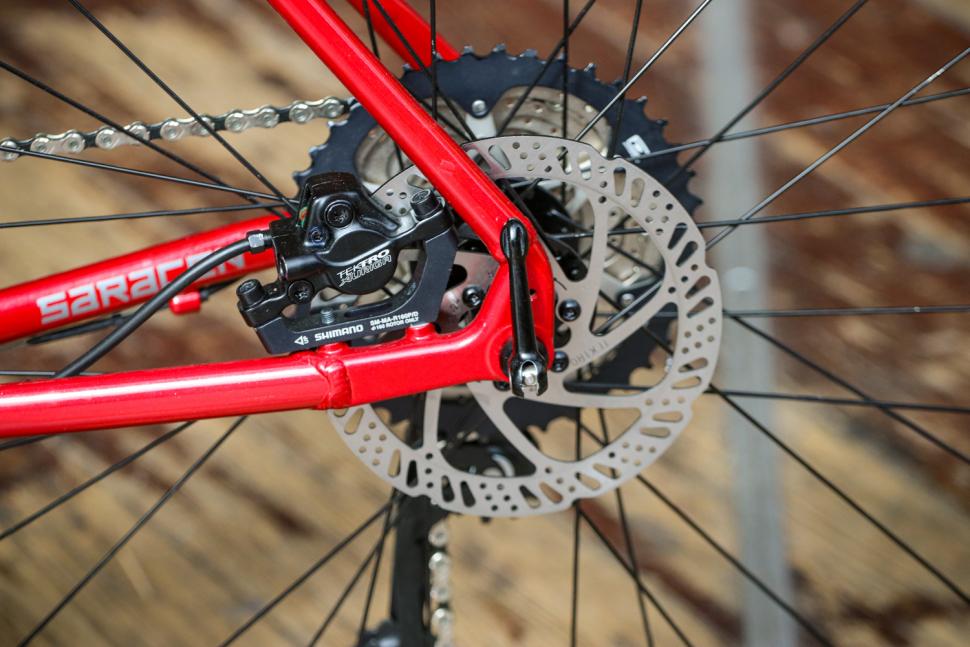
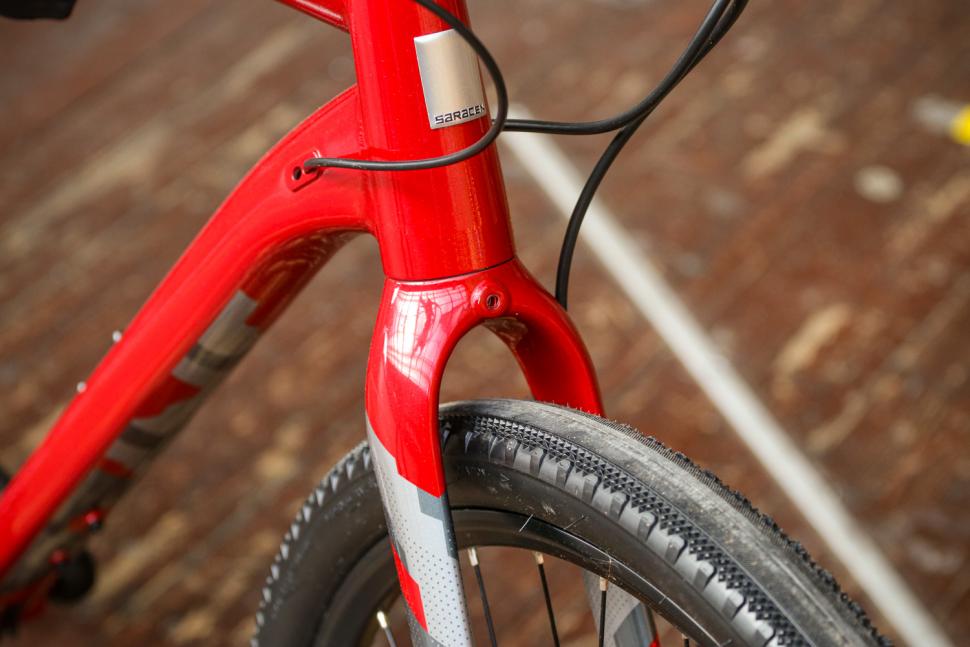

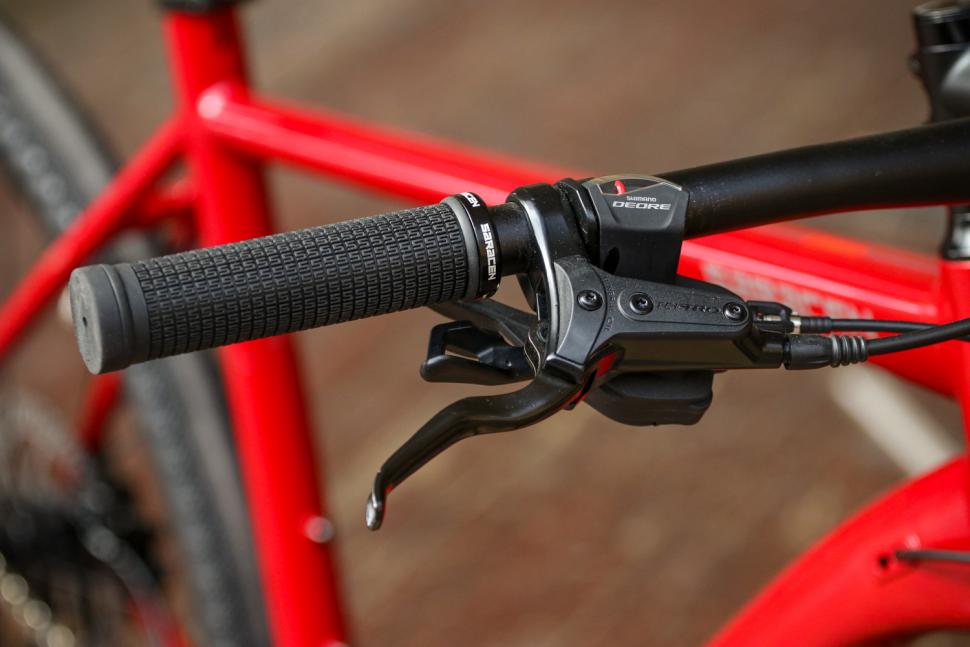
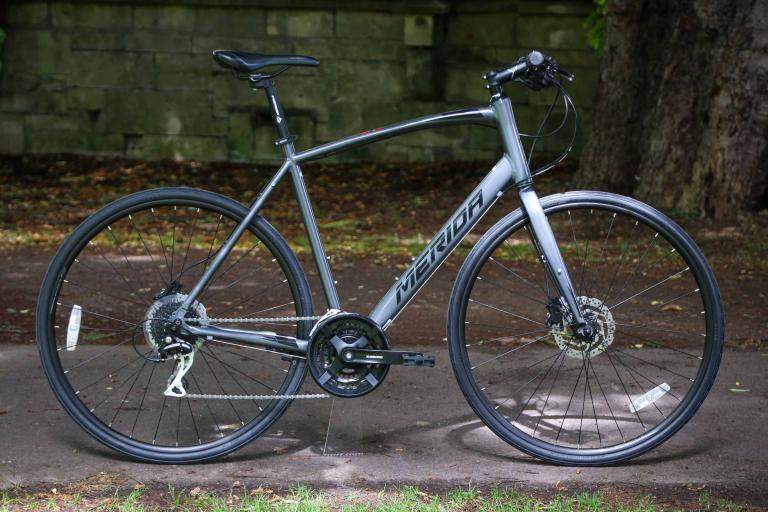
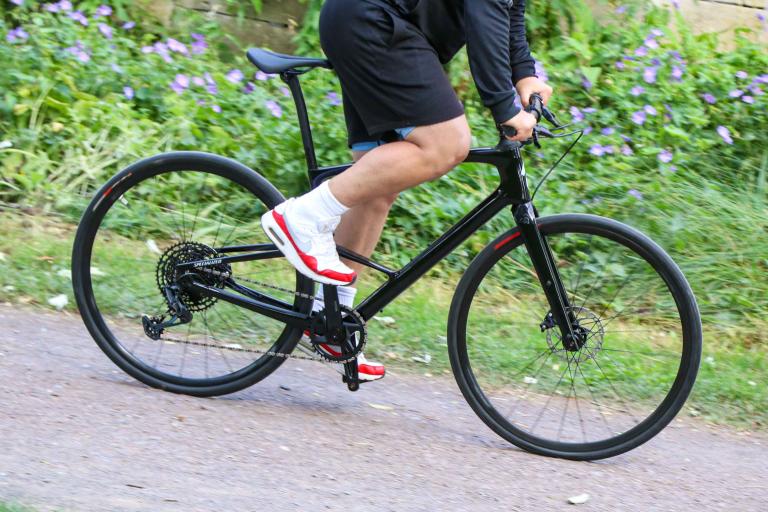
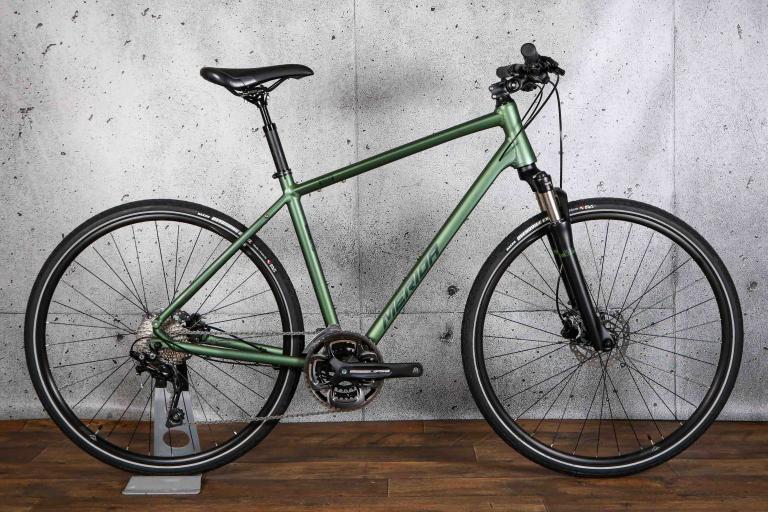
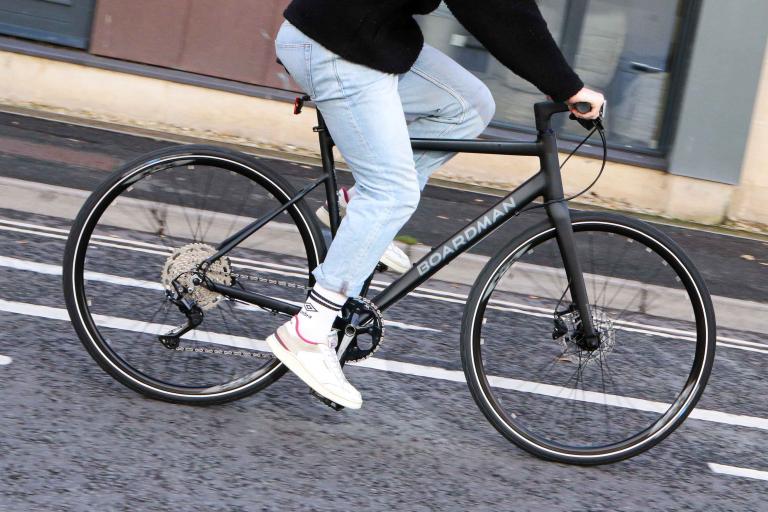
Add new comment
13 comments
Grrr...
"At the back, comfort is much more in evidence and the ByWay tyre plays its part with the more forgiving aluminium frame to keep your rear end peachy"
What nonsense. Rear end compliance on a hardtail is totally dominated by the tyre, especially so when they're fat ones at low pressure.. Maybe a bit of seatpost flex making a very small contribution, but 'the more forgiving aluminium frame"? Destroys the credibilty of the whole article I'm afraid.
Destroys the credibilty of the whole article I'm afraid.
While the whole compliance thing is overused in marketing, I've afraid your comment is what's rubbish.
If complience on hardtail (road or MTB) was purely down to the tyre, then how come I (and many others) feel a whole load more comfortable on a high end carbon or steel frame compared to alu? I can vouch for the frame making a difference as a result of at one time upgrading the frame (simply switching the parts across, thus using the same wheels/tyres etc. on both).
Not only that, but there can be a significant difference between frames made from the 'same' material, due to differences in the make up of the material (the particular alloy or specific carbon layup), and the tube profiles used. So while I mention above the difference between Carbon and Alu, it's perfectly possible to tell the difference between alu and alu.
Sure, with a bike booted up with tyres of the size of the byways, the tyres will be the most significant contributing factor to the compliance, but don't discount the frame entirely.
Quite a lot of money maybe...and agree...basically a rigid 650b MTB, but why not? Looks nice and is certainly suited to flicking around the streets round here with their potholes and rubbish surfaces.
But really, though..."Levarg"...? Gravel backwards? is it a backwards gravel bike? does it go backwards? is it so retro they had to spell the type of bike it is backwards?
Have you ever cracked so bad you started rolling backwards down a climb? I am not proud to say I have...
Compared to (say) the On One Scandal, this looks like pretty terrible value for money. As someone else said, it does look like a parts bin special.
You have never needed the granny for climbing big hills or the big for zooming down said big hill?
I've gone Rohloff for my new Ultimate Commuter, and sometimes miss the triples that my other 2 have.
Nope, never, ktache
Both of my bikes have triple chainsets. I have never, on either bike, changed out of the middle chainring.
"That might seem a bit of an omission, but it’s not really the kind of bike you'd want to laden down with massive panniers..."
I guess not, if you have N+1 bikes.
For those of us with just the one bike, it must do double or triple duty, for commuting, leisure and shopping. I'm sure there are other uses too. Since at least the last one does require some useful carrying capacity, probably most commuters need to carry stuff too, why not include the necessary? It costs diddly-squat and detracts nothing from the sans-panniers cyclists.
Some people havebeen saying for a while that gravel bikes are just drop bar hybrids. How long before gravel bikes become the standard Euro-spec trekking bike?
FWIW I think hybrids are massively underrated by 'serious' cyclists. Useful, versatile bikes. Just like 'gravel' bikes.
I'm actually in the market for a flat bar gravel bike for commuting and local singletrack. I'm wanting something more road oriented than a hardtail mtb would justify. This isn't the spec I'm after but interested to find out if this is "just" a standard gravel bike geometry with flat bar rather than drops and if so does that same principle apply to any gravel bike?
Cool - it's like Saracen have built a parts-bin special and productionised it. Question is, when does an urban/gravel bike just become a rigid mountain bike? Feels like we've almost gone full circle now.
Would someone jump that? Still looks like a road orientation frame made to torque nimble on wide feet rather than a mountain track hold on too bike although..
Looks perfect if happy traveling straights at 20 rather than 25 kmph but having torque steerage and leverage easier to hop gutters.
I might be wrong.. It's red. It'll be faster.